Trevisane pattern
The double-ended version of the ‘Trevisane’ pattern originated in the early 19th century.
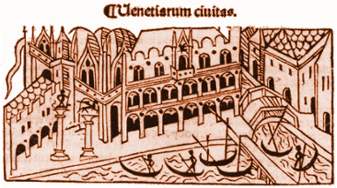
‘Trevisane’, ‘Trevigiane’ or ‘Venetian’ pattern
North Italy has been a card-making centre since at least the 16th century but packs from that time are scarce. At some point 'standard' patterns became established in certain areas which manufacturers adhered to. It appears that the double-ended version of the ‘Trevisane’ or ‘Trevigiane’ pattern originated in the early 19th century. The designs show archaic features which would have derived from earlier prototypes, including curved, interlaced swords and long batons. Most of the full-length features have been preserved, including the head held by the executioner Jack of Swords. The King of Batons holds a coat-of-arms of Treviso, with the inscription ‘Tarvisium’ in latin, since this pattern originally came from Treviso. There are interesting Italian mottoes on the aces. The ace of coins has a circle to receive the tax stamp.
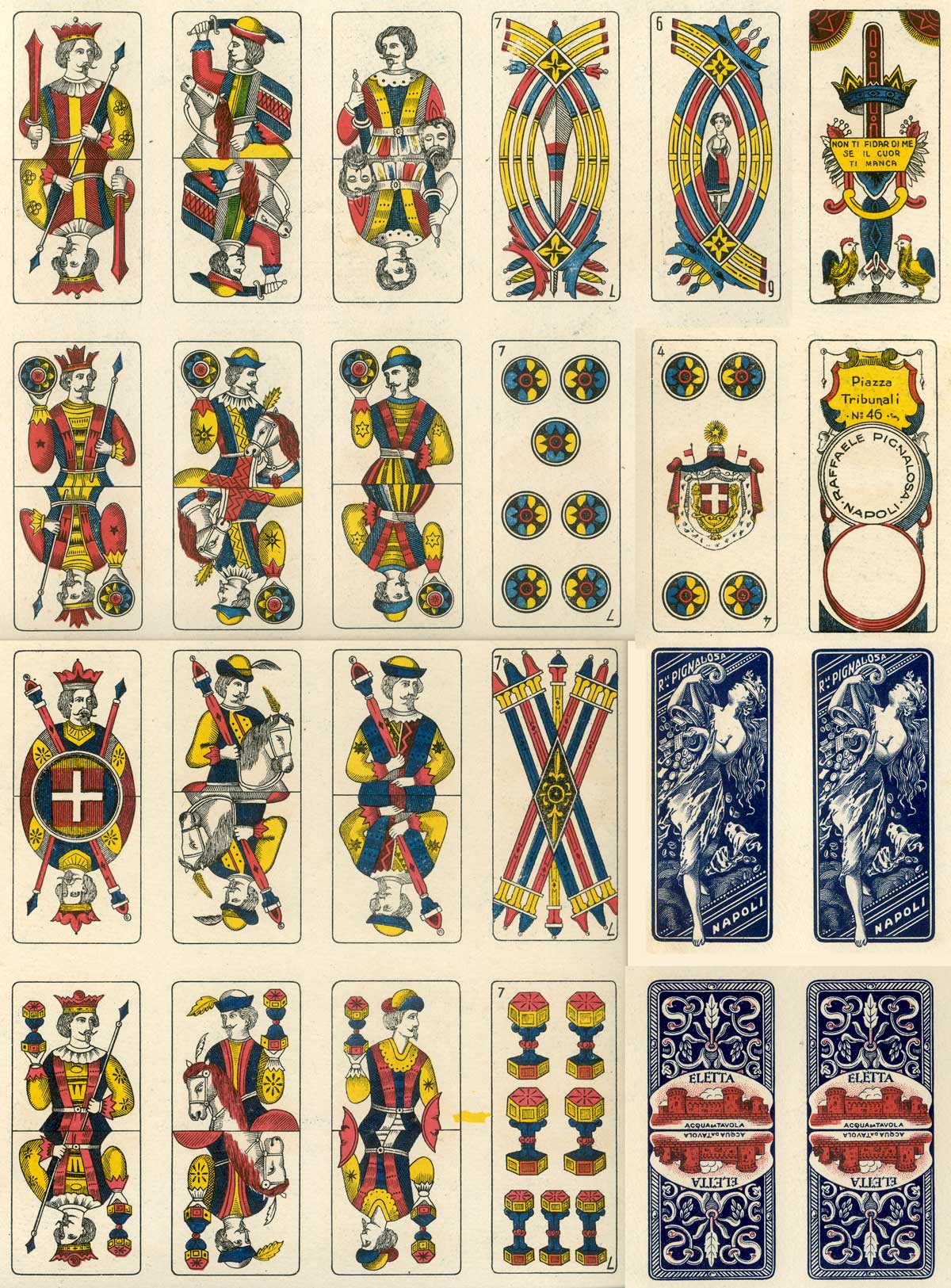
Above: cards from uncut sheets of ‘Trevigiane’ playing cards printed by Raffaele Pignalosa, Naples, c.1925-28. This edition is missing the coat-of-arms of Treviso on the King of Batons. Two different back designs are shown (right) and packs come in 40-card or 52-card versions.
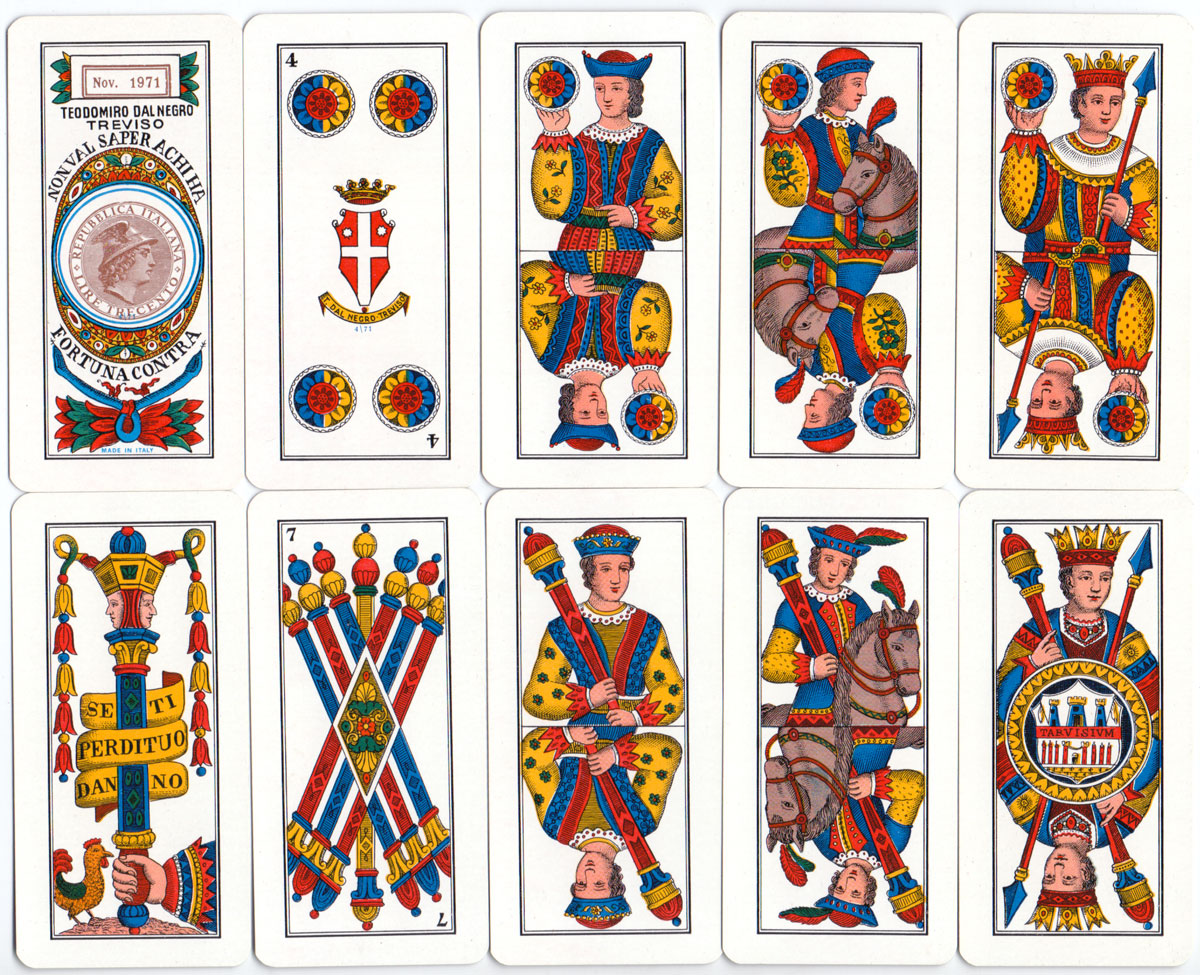
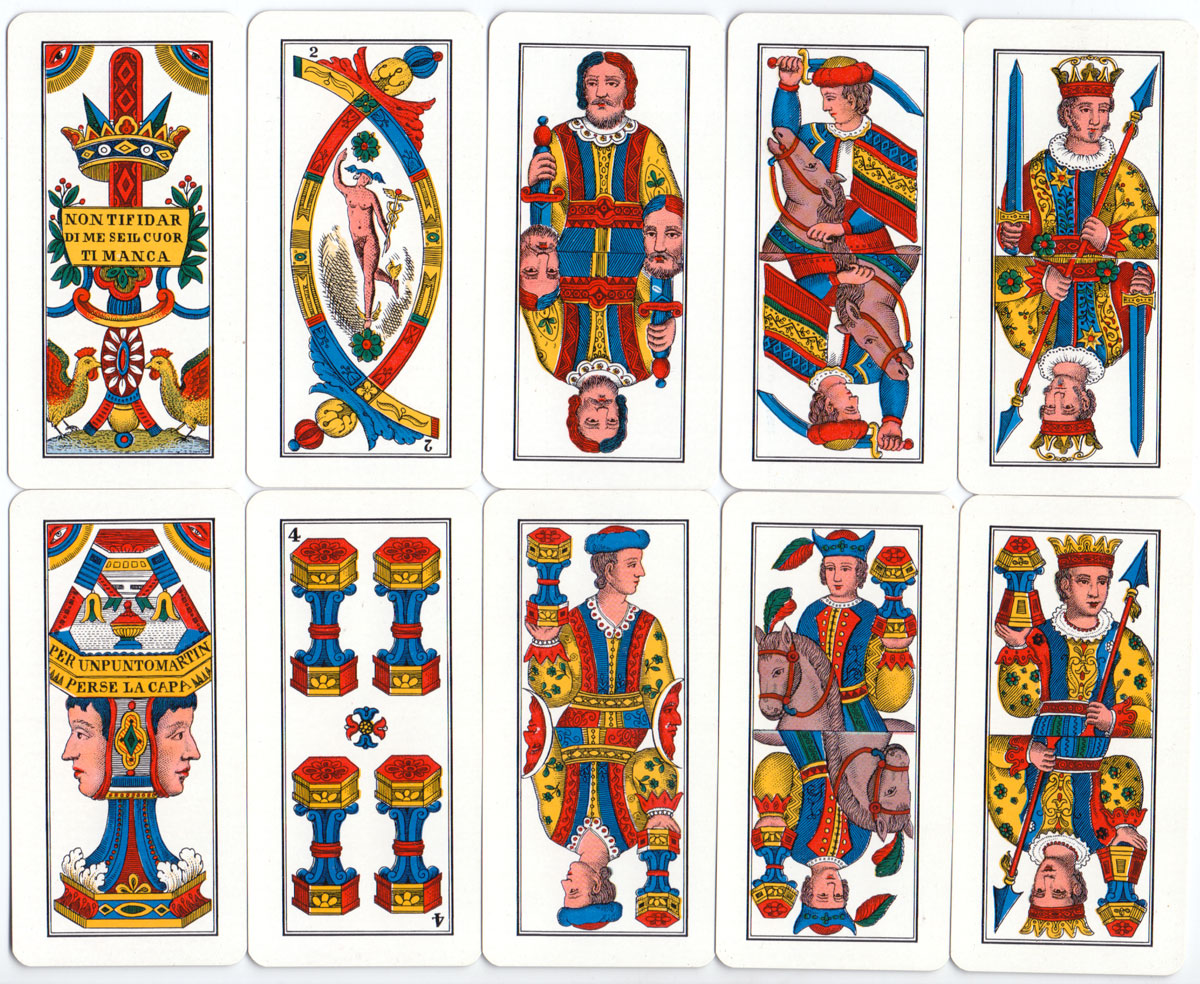
Above: ‘Trevisane’ pattern by Dal Negro, Treviso, 1971. The King of Batons holds a coat-of-arms of Treviso, with the inscription ‘Tarvisium’ in latin, since this pattern originally came from Treviso.
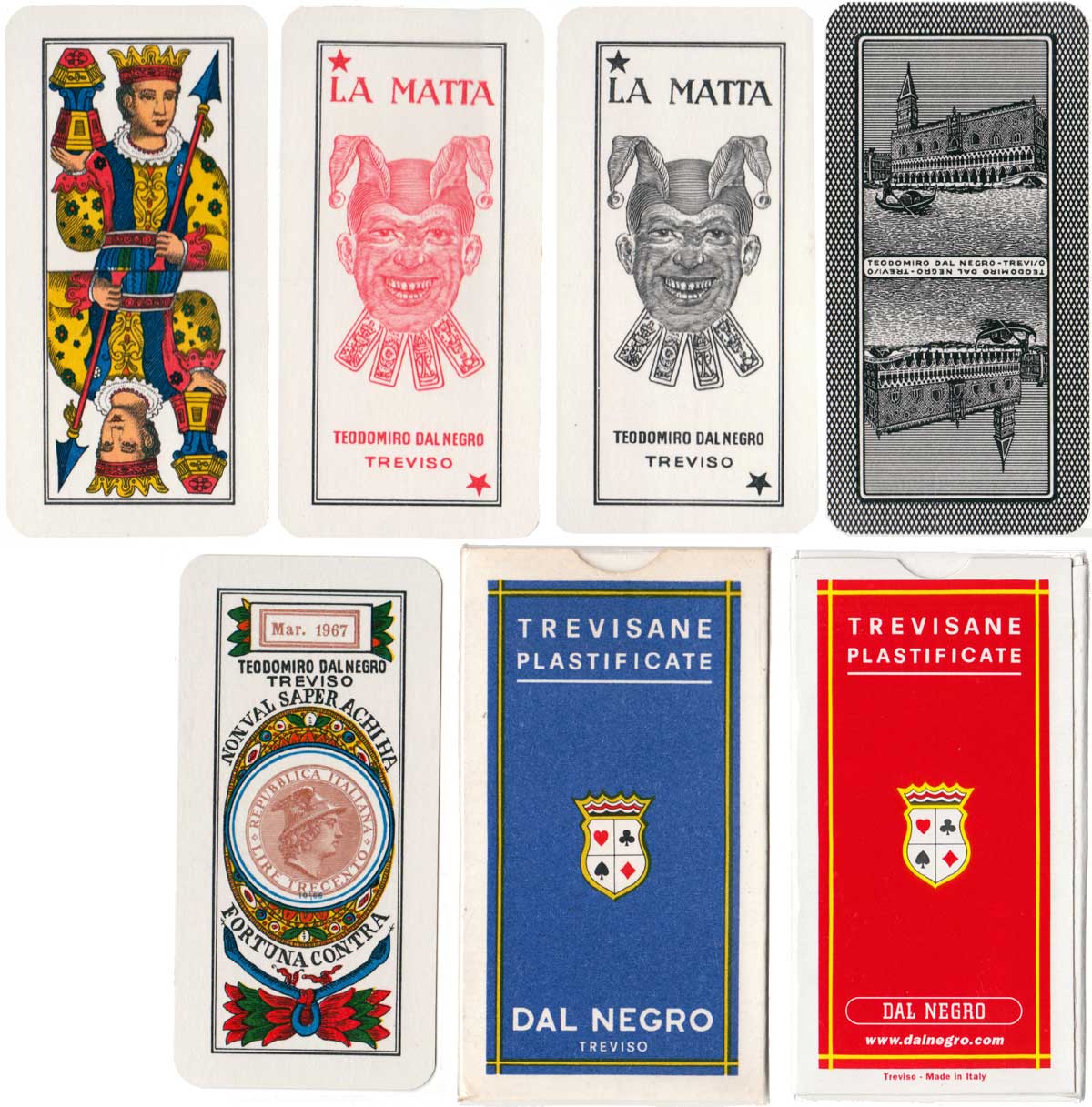
Above: ‘Trevisane’ pattern by Dal Negro, including the two jokers, Treviso, 1967. Image courtesy Rex Pitts.
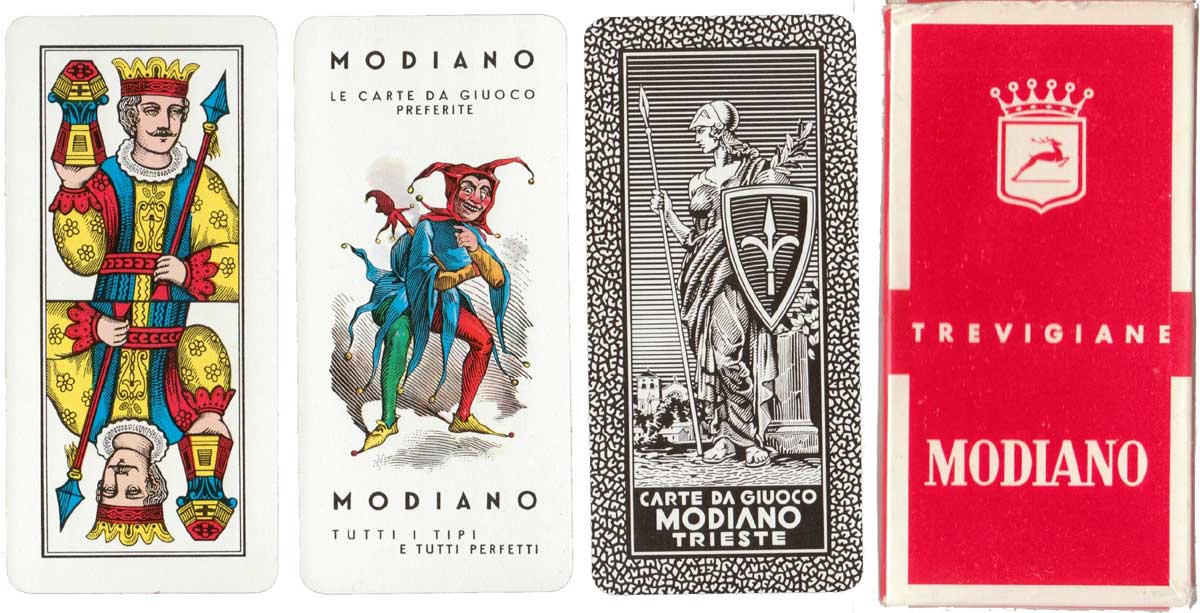
Above: ‘Trevigiane’ pattern by Modiano, 1970s, including the joker. Image courtesy Rex Pitts.

By Simon Wintle
Member since February 01, 1996
I am the founder of The World of Playing Cards (est. 1996), a website dedicated to the history, artistry and cultural significance of playing cards and tarot. Over the years I have researched various areas of the subject, acquired and traded collections and contributed as a committee member of the IPCS and graphics editor of The Playing-Card journal. Having lived in Chile, England, Wales, and now Spain, these experiences have shaped my work and passion for playing cards. Amongst my achievements is producing a limited-edition replica of a 17th-century English pack using woodblocks and stencils—a labour of love. Today, the World of Playing Cards is a global collaborative project, with my son Adam serving as the technical driving force behind its development. His innovative efforts have helped shape the site into the thriving hub it is today. You are warmly invited to become a contributor and share your enthusiasm.
Related Articles

Late flowering of the Lyon pattern
Faustino Solesio’s late version of the Lyon pattern from about 1870.

Czech National Patterns by S.D. Modiano
Modiano produced cards with the Prague and Trappola patterns in the early 20th century.

Emilio Tadini playing cards
Beautiful dreamlike playing card designs by Emilio Tadini.

French Revolutionary cards by Pinaut
Seven cards from a French Revolutionary pack by Pinaut featuring characters from classical antiquity...

Austrian Tarock by S.D. Modiano
Modiano’s Austrian Tarock with country scenes has been in production for over 100 years.

Le carte da gioco Arcimboldo
Courts and suit-signs inspired by the works of the Italian Renaissance painter, Giuseppe Arcimboldo....

22 Pittori in 22 Arcani
Collaborative Tarot with contributions from 22 different Italian artists including Menegazzi and Tav...

Justice playing cards
Ethical concepts in a deck produced by Riccardo Conturbia’s Passione Playing Cards Ltd.

Alan Tarot Deck
Reprint of a Tarock pack originally designed by Argio Orell for the Austrian Lloyd shipping company....

Il Tarocco del Mondo Nuovo
Imaginative Tarot card designs by Amerigo Folchi relating to Columbus and the New World.

22 Artisti Liguri in 22 Arcani
Collaborative set of major arcana devoted to Christopher Columbus and his voyages of discovery.

Carte di Colombo
Fully illustrated pack designed by Pier Canosa commemorating the 500th anniversary of the discovery ...

Carte di Natale
Designed by Pier Canosa as a Christmas pack for the Cortina Art Gallery in Milan.

Lyon pattern made in Italy by Pietro de Santi
The Lyon pattern was initially developed in France during the 16th century. As Lyon was a trading hu...

Laurenzo Propagine
Spanish-suited cards made in Italy by Laurenzo Propagine.

Il Tarocco Mitologico
Fully pictorial Tarot designed by Amerigo Folchi with figures mainly from Greek mythology.
Most Popular
Our top articles from the past 28 days

